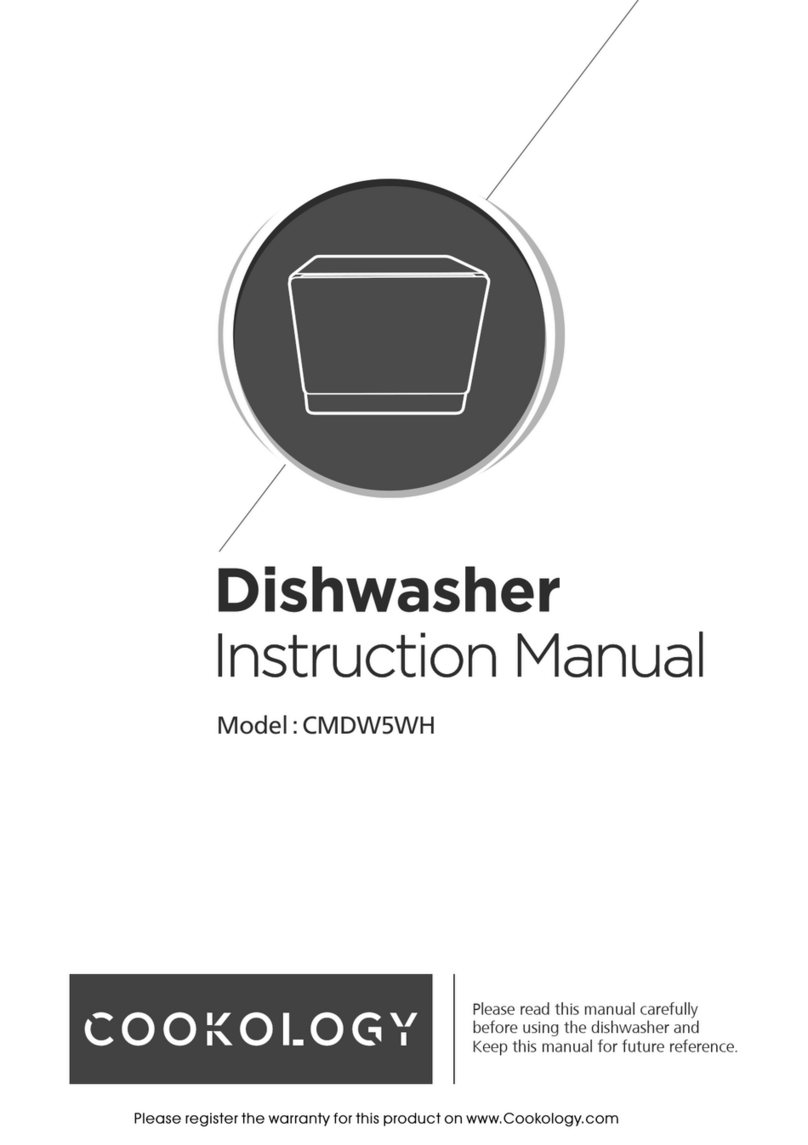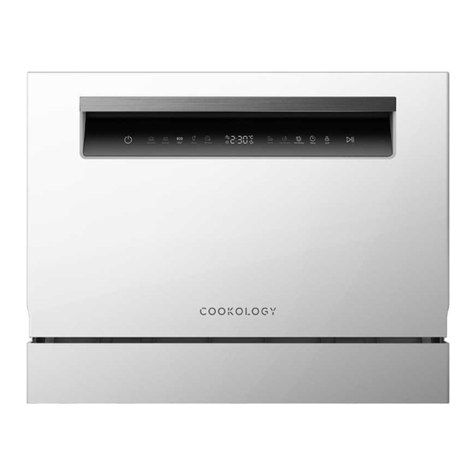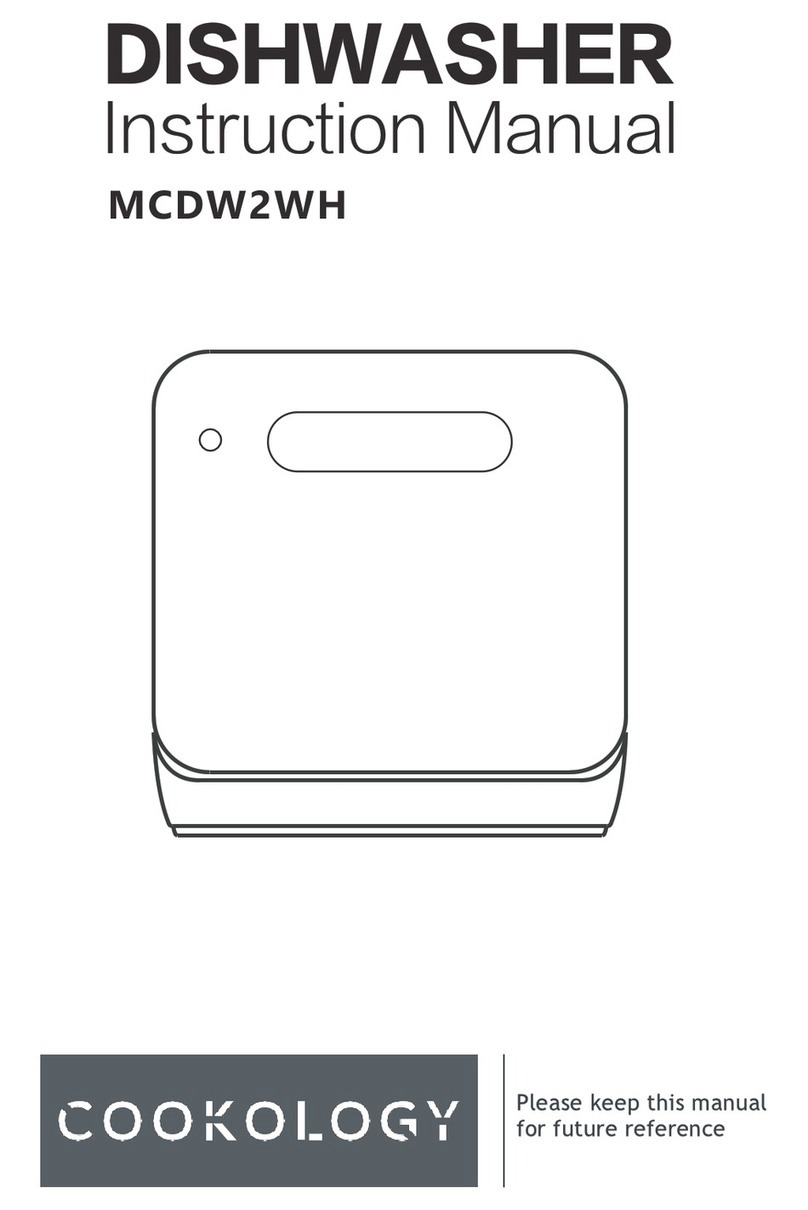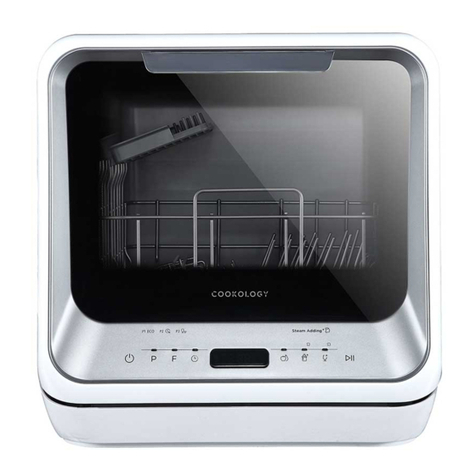
To review the section on troubleshooting Tips
will help youto solve somecommon problems
by yourself .
NOTE:
Dear Customer,
Please carefully read this manualbefore using the
dishwasher, itwill help youto use and maintain the
dishwasher properly.
Pass it on to any subsequent ownerof the appliance.
This manual containssections on safetyInstructions,
Operating Instructions, Installation Instructions and
Troubleshooting Tips, etc.
The manufacturer,following a policyof constant
development and updatingof the product,may
make modifications withoutgiving prior notice.
Read this Manual
Before Calling for Service
Keep it asa refer inthe later days.
If you can not solve the problems by yourself ,
please ask forthe help ofprofessional technicians.
Dishwasher Features.................................... ...5
4) Prior usingfor the firsttime...............................64) Prior usingfor the firsttime...............................6
A Water Softener...........................................6
5) Loading theDishwasher Basket.......................115) Loading theDishwasher Basket.......................11
Attention before orafter loading theDishwasher
Baskets........................................................ 11
7) Maintenance andcleaning..............................157) Maintenance andcleaning..............................15
Filtering System.............................................15
Caring for the Dishwasher...............................16
B Loading the Salt into the Softener.................7
C Fill the RinseAid Dispenser.........................7
D Function of Detergent .................................8
Loading the upperBasket...............................12
Loading the Lower Basket...............................12
6) Starting awashing programme........................136) Starting awashing programme........................13
Wash Cycle Table...........................................13
Turning on the Appliance................................13
Change the Programme..................................14
At the end of the Wash Cycle...........................14
8) Installation instruction....................................178) Installation instruction...................... ............17..
9) TroubleshootingTips......................................249) TroubleshootingTips................................ ....24..
Before calling for service.................................24
Error codes...................................................25
Technicalinformation.....................................26
1) Safety Information..........................................11) Safety Information..........................................1
3) Operation Instructions.....................................53) Operation Instructions.....................................5
Control Panel...................................................5
.................................. 17Installation preparation
Aesthetic panel's dimensions and installation...18
..............20Tension adjustment of the door spring
.............................. 20Connection of drain hoses
......................... 21Dishwasher installation steps
About Electricity Connecting...........................22
Cold Water Connection.................................. 23
Loading the baskets according to En50242Loading the baskets according to En50242
2) Quick operation guide..................................... 42) Quick operation guide..................................... 4





































